According to our survey, 95% of content marketers create content for the top of the funnel, 86% for the middle of the funnel, and 76% covering the bottom of the funnel. Which means that people successfully use content not just to attract traffic, but to nurture and convert leads.
The question is how well your website content works at each funnel stage, and whether you have covered the whole customer journey. To answer it, you need data about your content performance that can be found in ImpactHero.
A content marketing funnel is a system that helps a brand attract and engage with its prospects, guiding them through the customer journey in order to convert them into paying customers. To build an effective funnel, follow the steps described below.
Explore the User Journey
The logical starting point is to understand what is happening with your content at that moment, which means you should start by breaking it down into funnel stages and checking its performance at each stage. To do this:
- Set up the ImpactHero tool and let it collect the data about your content performance.
Go to the Overview tab. At the top of the page you’ll see your Reach (traffic), Nurturing (active visitors), and Leads (website visitors who sent the lead gen form). The first thing to pay attention to is whether these numbers are growing. If any of the metrics are declining, then the corresponding funnel stage needs your attention.

If Reach is low, you may need to focus on SEO or consider promoting your content via other channels.
If Nurturing is low compared to Reach, you may have a lot of people visiting one page of your website but showing no further activity. There can be several reasons for this, such as an irrelevant audience, or perhaps the content doesn’t incite action. In the first case, you can recheck your audience demographics and psychographics and, in the second, improve UX to ease navigation, as well as adding interlinks and CTAs to incite action.
If Leads are low, there's likely something that is preventing your users from subscribing to your product, or your lead magnet is ineffective. This can be anything from poor content to technical issues.
- To analyze the possible reasons of the improvement/decline at the specific stage, look at the traffic channels. Open the full Users Flow report and switch to Traffic Sources. Analyze the traffic flow to see what channels bring you the most/least visitors, user activity, and leads.
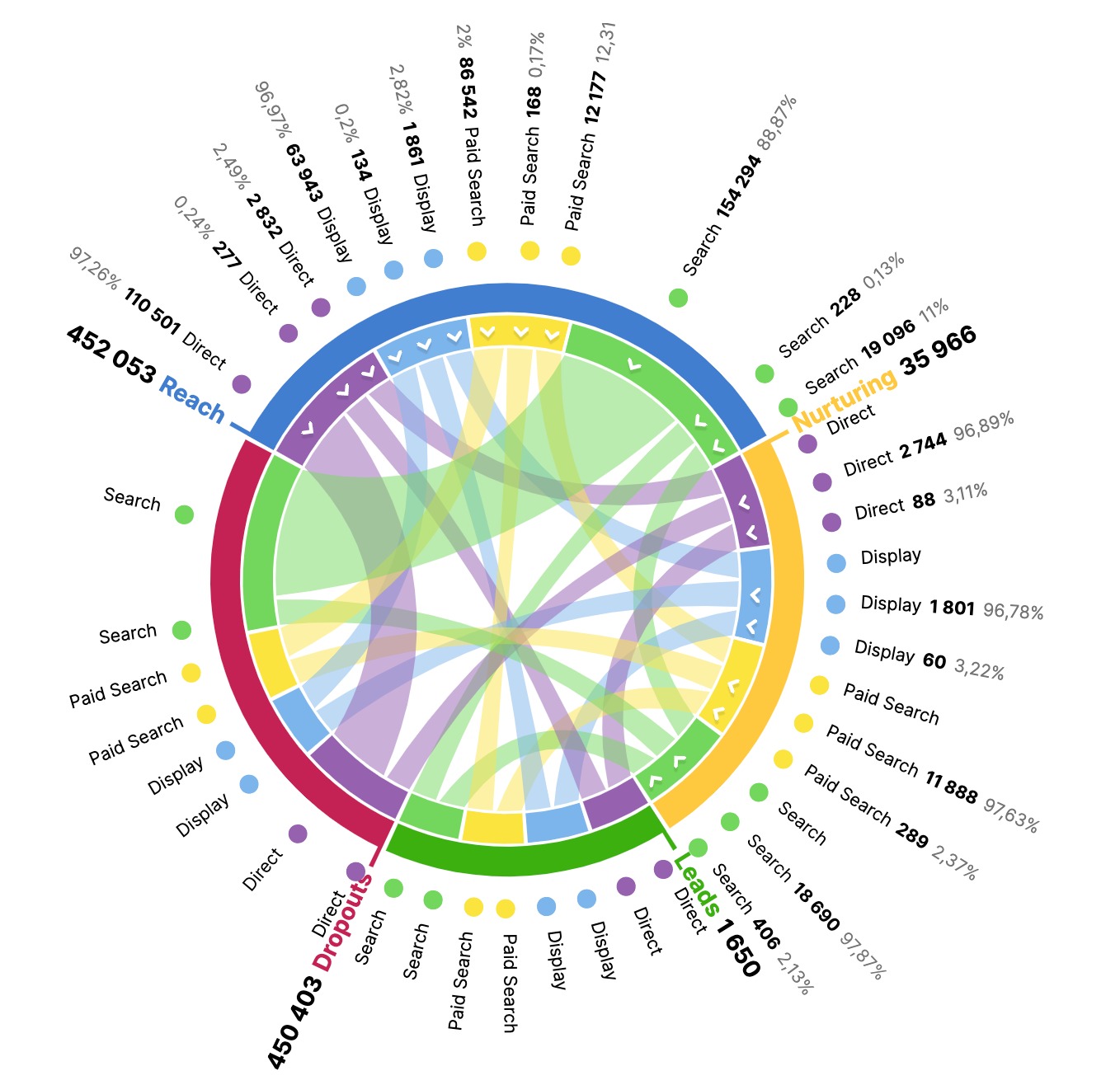
You can also view selected traffic sources and historical data for up to three months to evaluate the effectiveness of your campaigns and efforts. For example, if you invested into optimizing your content for search, you can then check whether your search traffic has increased.
Analyze Highly and Poorly Performing Pages
Now that you have a general understanding of your user journey, it’s time to get down to the copy level to see what can be done to address potential issues and increase overall funnel efficiency.
- Go to the Contents tab and choose the funnel stage: Attraction (for Reach), Impact (for Nurturing), or Conversion (for Leads). In the contents table you’ll find all your website content sorted by the key funnel stage metric, i.e. external traffic for Attraction, Impact Score for Impact, and Leads for Conversion.
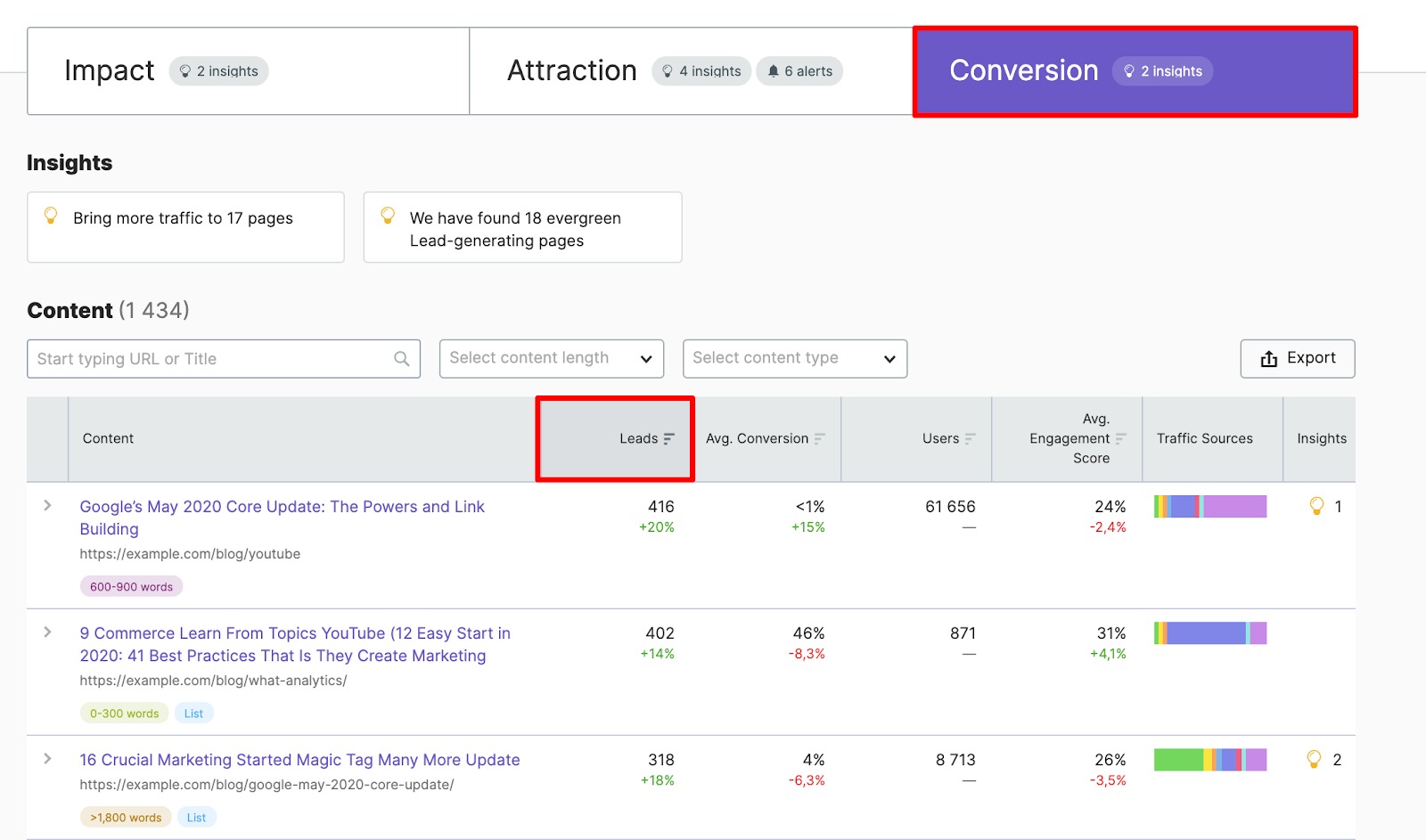
- Analyze the top performing content in depth to make the most of it. At the bottom of the page you will find your content sorted by performance. Click on each item to see the total daily or weekly traffic trend and traffic sources for each page.
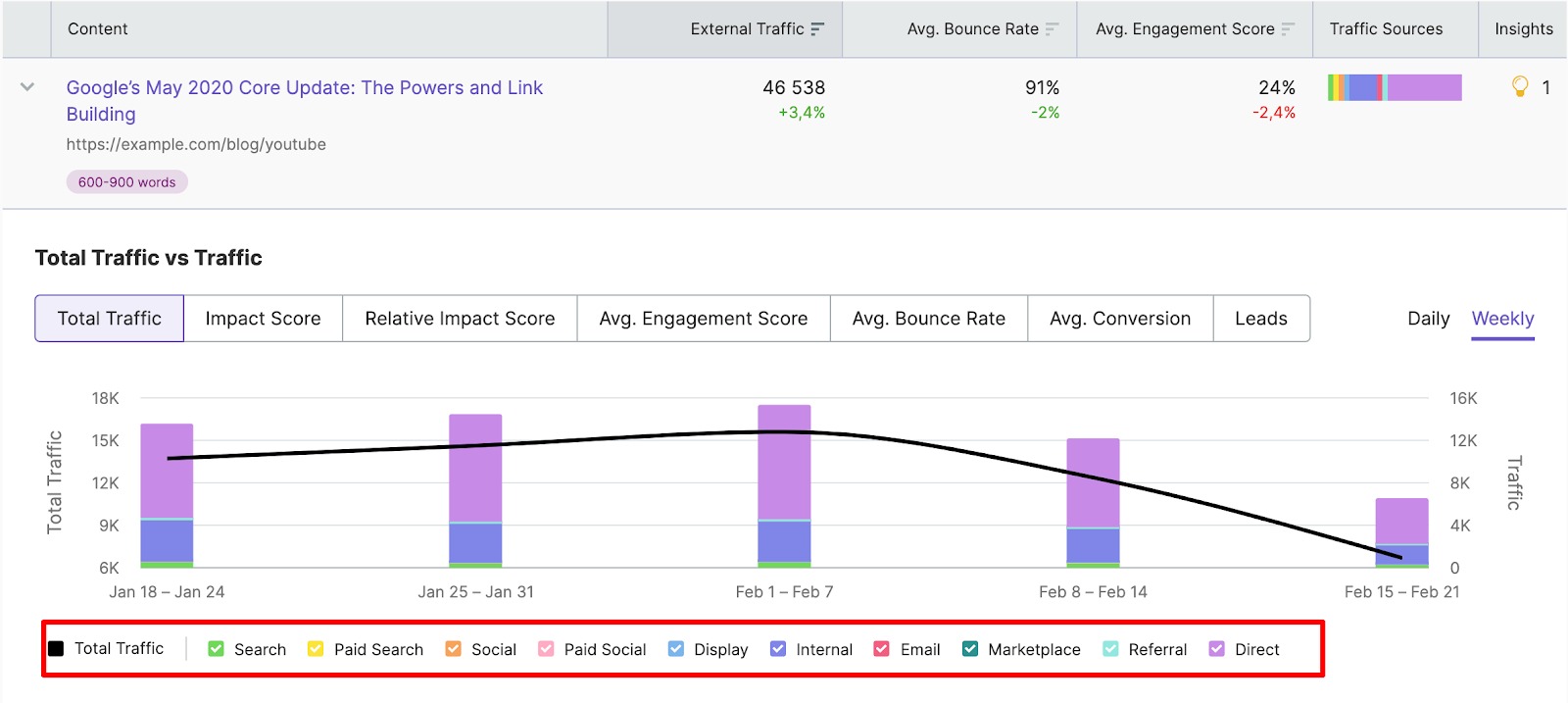
- Check out the Insights and Alerts section to learn how your content performance changed during the last 30 days and get recommendations on how to improve it.

Here are some of the recommendations you can get:
- A page gets a large amount of external traffic but has a low engagement score: check if the content is relevant to the title and if the first paragraph is engaging enough.
- A page gets a large amount of external traffic but has a high bounce rate: check the content quality, UX, and if it aligns with search intent.
- A page has a high Engagement Score and low bounce rate, but gets little traffic: promote the page more actively.
Cover the Gaps in Your Strategy
It’s important to cover the gaps in your content strategy and ensure that everything is consistent and optimized. As mentioned, insights can provide suggestions to help you improve your content, but you can also use Analytics to define the perfect format and structure for your new pieces.
- Go to Analytics and choose a metric (traffic, engagement score, leads, etc.). There you’ll see your content distributed by type.
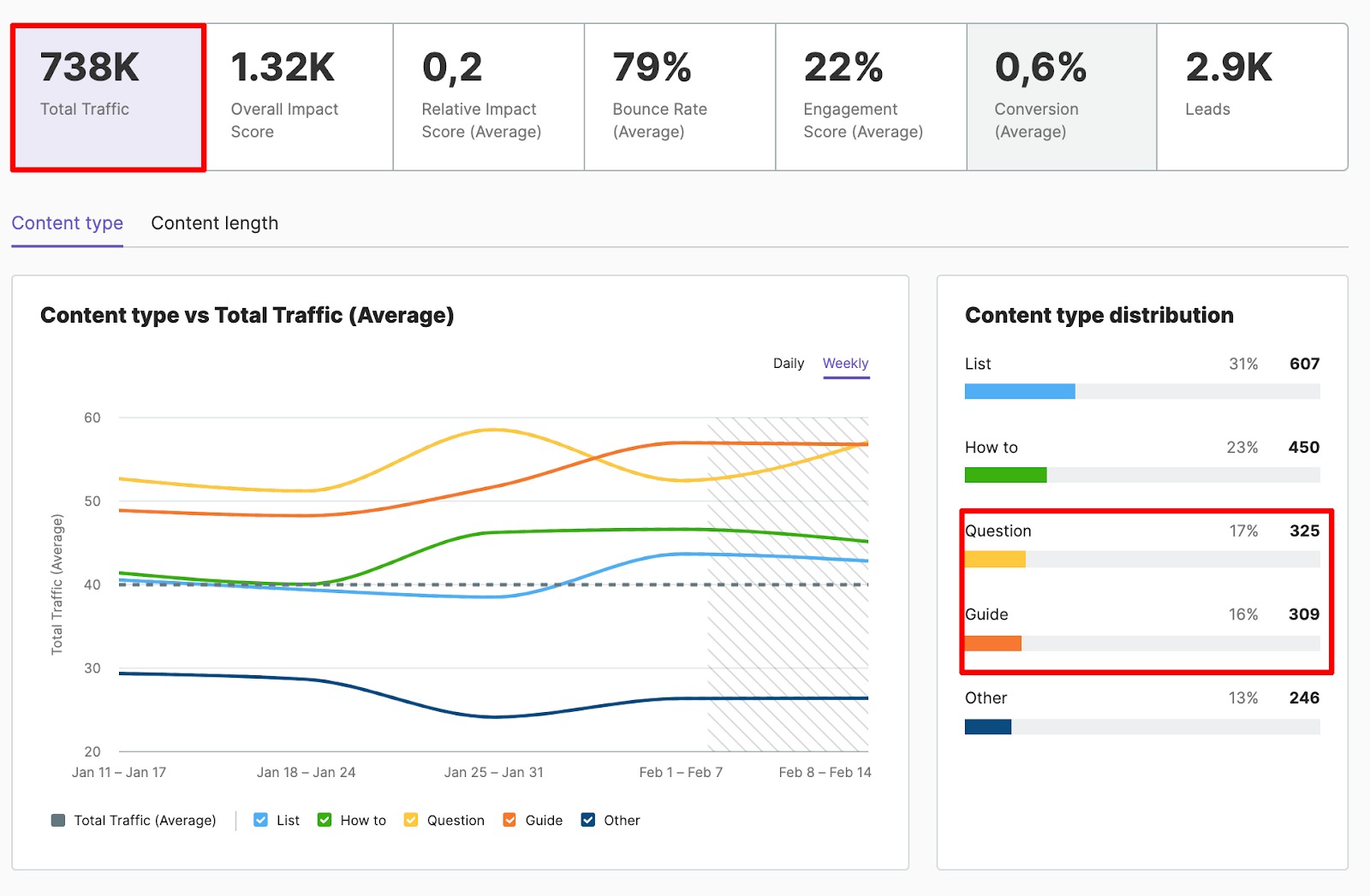
As you can see, questions and guides bring more traffic than lists and how-tos, so to increase reach you can focus on these types of articles.
- Switch to Content Length. Now you can understand how long your future article should be.
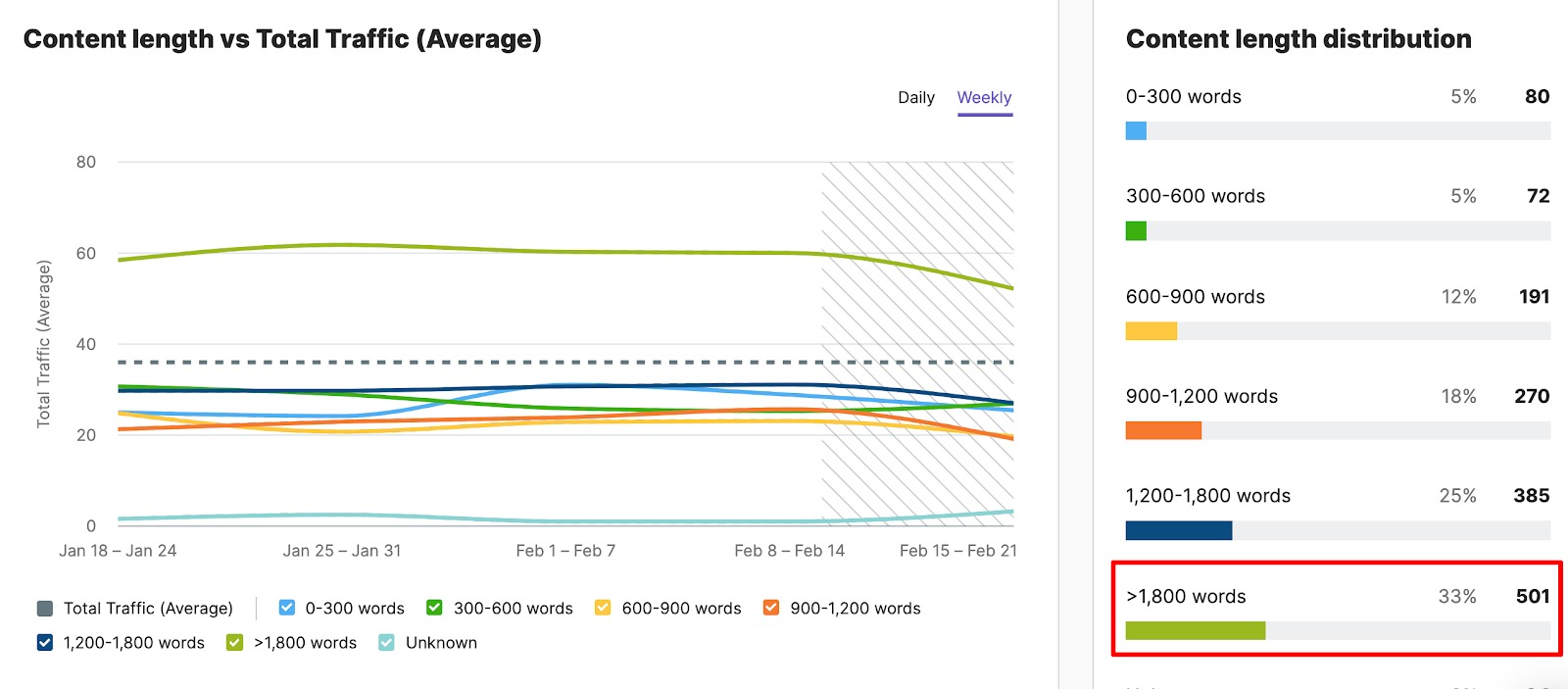
In this example, pieces of over 1,800 words are absolute leaders in terms of traffic, so you would definitely consider producing some well-researched guides, or providing very detailed answers for your users’ questions.
Next Steps
To increase your chances of content marketing success, you should be measuring your results on a regular basis to know if your efforts are working. It’s also crucial to continue improving your content quality and performance. Ensure that you:
- Introduce ongoing monitoring. Use ImpactHero to continuously collect data and make sure your metrics are not declining due to seasonal trends, various economic factors, and your competitors’ activities.
- Gain more insights. Keep checking the insights offered by the tool to keep traffic, engagement, and leads stable and growing.
- Track custom goals. Set up your own marketing goals and monitor the impact of content on just anything that matters for your business from callback requests to link clicks.